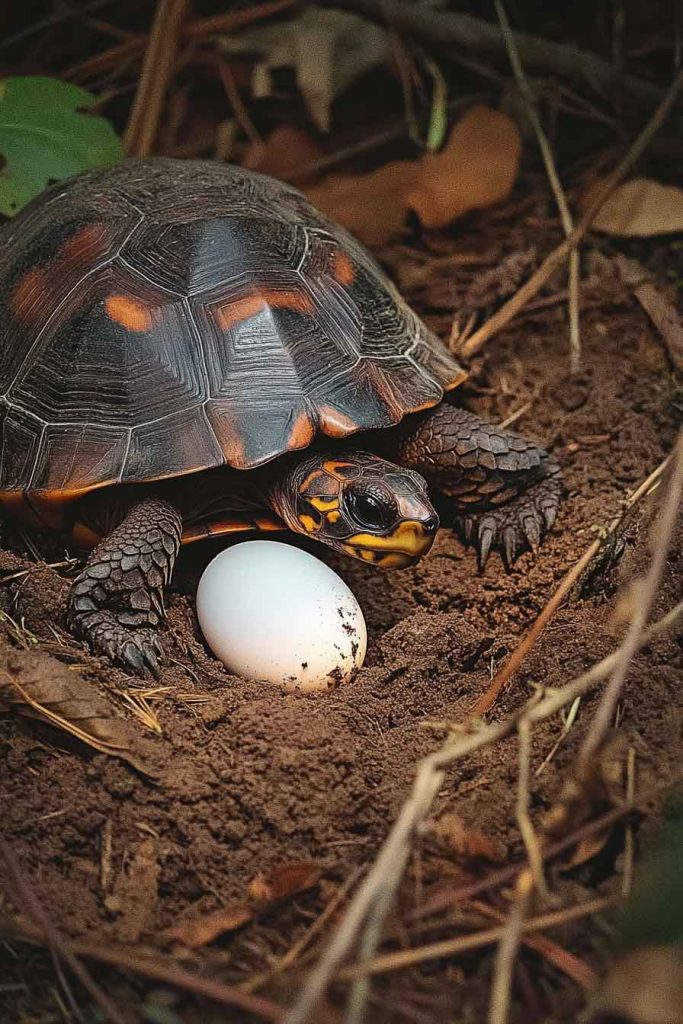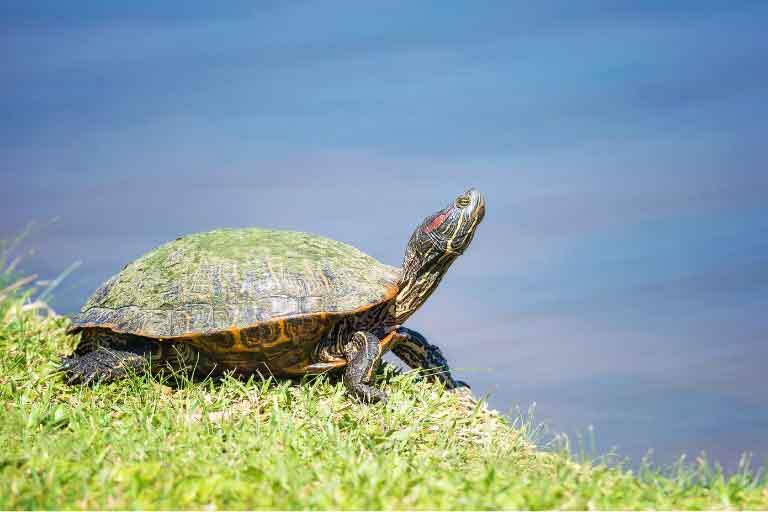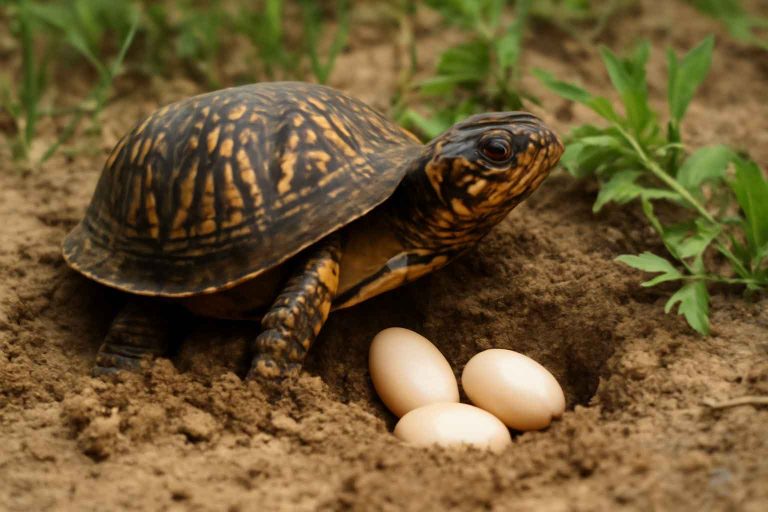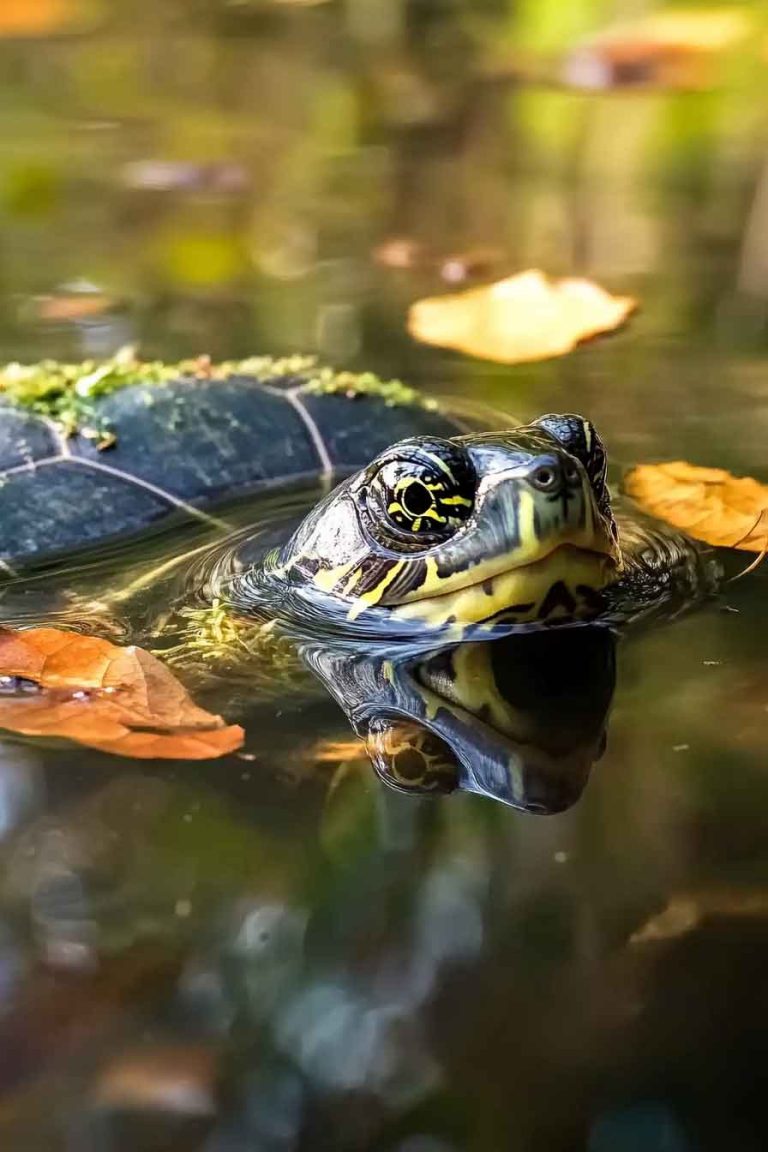Box Turtle Eggs Care Guide
Box turtles are fascinating and resilient reptiles, and caring for their eggs requires knowledge, patience, and a gentle touch. Whether you’re a reptile breeder, a wildlife rehabilitator, or a lucky pet owner whose female turtle just laid eggs, this guide will walk you through every step of the box turtle egg care process. How do…
Box turtles are fascinating and resilient reptiles, and caring for their eggs requires knowledge, patience, and a gentle touch. Whether you’re a reptile breeder, a wildlife rehabilitator, or a lucky pet owner whose female turtle just laid eggs, this guide will walk you through every step of the box turtle egg care process.
How do you take care of box turtle eggs? To care for box turtle eggs, you must properly locate and handle the eggs, maintain correct temperature and humidity in an incubation setup, and avoid rotating or shaking the eggs at any stage. With careful attention, you can ensure the eggs develop safely and hatch successfully.
In the sections below, we’ll explore how to identify, care for, and incubate box turtle eggs. We’ll also share expert tips on common issues and what to expect during the hatching process.
How do box turtles lay their eggs?
Female box turtles typically lay their eggs in spring or early summer. They look for soft, moist soil in a secluded area and use their hind legs to dig a hole several inches deep. After laying, they cover the nest with soil to protect it from predators and temperature changes.
A female may lay 3 to 8 eggs in one clutch, and under natural conditions, the eggs are left to incubate in the wild. However, in captivity or controlled environments, human intervention may be needed to ensure safe development.

Where can you find box turtle eggs?
If you’re caring for a pet box turtle or monitoring wild turtles on your property, you may notice signs of nesting — disturbed soil, digging behavior, or the turtle lingering in one spot for hours. Gently check the area with clean hands or a small tool.
Do not dig too aggressively. Box turtle eggs are fragile and can be easily damaged. If you locate eggs, mark their position, and be sure not to rotate them — the orientation must stay the same to avoid harming the embryo.
Should you move box turtle eggs?
Moving box turtle eggs is sometimes necessary for successful hatching, especially if the nest is in danger from predators, flooding, or environmental changes. But it must be done very carefully.
Here’s how to safely move box turtle eggs:
- Use a pencil to mark the top of each egg before moving. This helps you keep the orientation the same.
- Gently place each egg into a padded container, such as a deli cup with soft vermiculite or sphagnum moss.
- Transport the eggs slowly and avoid any shaking or rolling.
- Place them in a pre-set incubator or nesting box as soon as possible.
How to incubate box turtle eggs?
Artificial incubation is the most reliable way to ensure box turtle eggs hatch successfully. You’ll need a proper incubator or a homemade setup that provides consistent temperature and humidity.
Let’s go over the key incubation conditions:
Temperature
The ideal temperature for incubating box turtle eggs is between 80°F and 86°F. Interestingly, temperature also affects the sex of the hatchlings:
- Lower temps (around 80°F) tend to produce males
- Higher temps (around 85°F–86°F) tend to produce females
Temperature stability is critical — fluctuations can cause deformities or death.
Humidity
Eggs need to be incubated in a humid environment, around 70–80% relative humidity. You can maintain this using:
- A closed plastic container with vent holes
- A substrate like damp vermiculite or perlite (moist but not wet)
- Occasional misting if things get too dry
A hygrometer and thermometer inside the incubator will help you monitor conditions closely.

How long do box turtle eggs take to hatch?
Box turtle eggs typically take 70 to 100 days to hatch, depending on temperature, humidity, and the specific subspecies. Eggs kept at slightly higher incubation temperatures may hatch earlier, while cooler setups extend the incubation period.
Throughout this time, avoid opening the container frequently — sudden changes in temperature and humidity can disrupt development. Patience is key. You won’t see movement or signs of life for weeks, but that doesn’t mean something’s wrong.
Candling (shining a light through the egg in a dark room) can help check for development after a few weeks. Look for visible veins or a shadow inside — these are good signs.
What are common problems during incubation?
Even under ideal conditions, some issues can arise. Below are some of the most frequent problems and how to manage them:
Mold or Fungus
If you spot fuzzy mold on the shell, try gently removing it with a Q-tip and distilled water. Mold typically signals too much moisture or poor air flow, so adjust humidity and add more ventilation holes to your container.
Collapsing or Denting Eggs
Slight dimpling is normal close to hatching. But early collapse often means too little humidity or that the embryo didn’t develop properly. Check your humidity levels and moisture content in the substrate.
Eggs Not Hatching After 100 Days
Some box turtle eggs can take longer, especially if temperatures are at the lower end of the range. Don’t discard eggs just because the due date has passed. As long as they haven’t collapsed, shriveled, or grown mold, it’s okay to wait a bit longer.
Signs that hatching is near
As hatching time approaches, you might notice subtle changes:
- A small crack or dent on the shell
- A slight “pipping” hole where the hatchling starts to break out
- Increased humidity inside the container from the egg’s internal fluids
Do not try to help the baby turtle hatch unless it has clearly been stuck for more than 48 hours after starting. Premature interference can damage vital yolk sacs and lead to deformities.
What to do after box turtle eggs hatch?
Once the eggs hatch, your job isn’t quite done. Hatchlings are delicate and require special care during their early days.
Leave them in the incubator
Newly hatched turtles should stay in the incubator for 24–48 hours. This gives them time to:
- Fully absorb their yolk sac
- Strengthen their muscles
- Adjust to their surroundings
Avoid handling them during this time unless absolutely necessary.
Prepare a safe enclosure
After they’re ready to move, place them in a shallow, secure enclosure with the following:
- A moist paper towel or sphagnum moss substrate to prevent dehydration
- A shallow water dish (easy for them to climb into and out of)
- Hiding spots to reduce stress
- Low-wattage UVB lighting and gentle heat (around 80°F)
Feeding hatchlings
Box turtle hatchlings usually begin eating after a few days. Start with soft, protein-rich foods like:
- Finely chopped earthworms
- Soaked commercial turtle pellets
- Scrambled eggs (no seasoning)
- Diced fruits and leafy greens
Offer food daily and clean up leftovers quickly to avoid bacteria.
Final thoughts
Caring for box turtle eggs is a rewarding but delicate process. From carefully locating the nest to maintaining ideal incubation conditions, and finally seeing those tiny turtles break free — it’s a full cycle of patience, observation, and dedication.
Here’s a quick recap:
- Handle eggs gently and never rotate them
- Incubate at 80–86°F with 70–80% humidity
- Be patient — hatching may take up to 100 days
- Support hatchlings with safe, humid enclosures and gentle handling
With the right approach, you can help these amazing reptiles start life strong and healthy.
FAQs
1. How many eggs do box turtles lay?
Box turtles typically lay 3 to 8 eggs per clutch, depending on age, size, and species. Some may lay multiple clutches per year under ideal conditions.
2. Can you hatch box turtle eggs without an incubator?
While some people use makeshift setups like warm closets or soil boxes, using a proper incubator is the safest and most consistent way to hatch box turtle eggs.
3. Do box turtles stay with their eggs?
No. Female box turtles lay their eggs, cover the nest, and leave. They do not return to care for the eggs or the hatchlings afterward.
4. Is it legal to incubate box turtle eggs?
It depends on your location. In many places, wild box turtles are protected, and collecting their eggs may be illegal without a permit. Always check local wildlife regulations before intervening.







